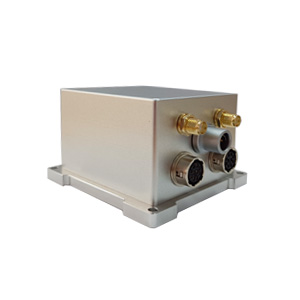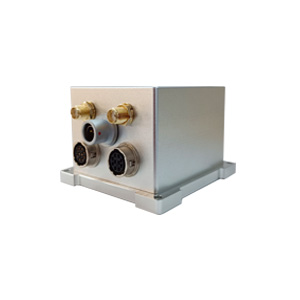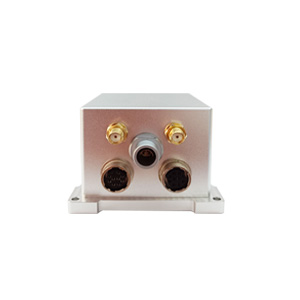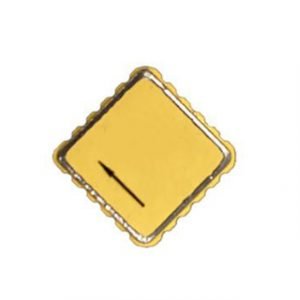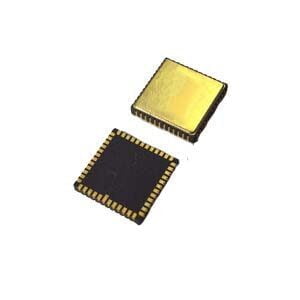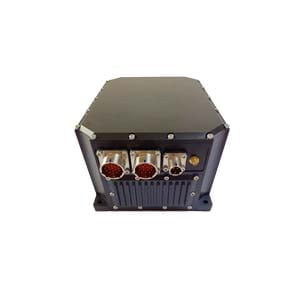The combination of GNSS and INS (Inertial Navigation System) can make up for the shortcomings of GNSS when signals are blocked or interrupted and the problem of low satellite refresh rate.
ER-GNSS/MINS-05 is a cost-effective combined navigation system designed for multiple scenarios. It can provide continuous, stable and accurate positioning, attitude and speed information in complex environments to meet the diverse needs of multiple fields.
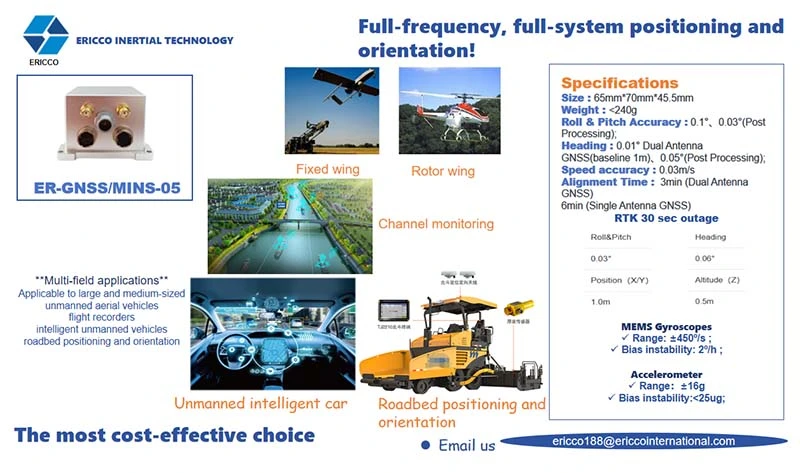
**High-precision fusion navigation**
Highly reliable and low-cost MEMS gyroscope (bias instability <2°/h) and accelerometer (bias instability <25ug).
Adopt advanced integrated navigation algorithm to achieve accurate output of real-time attitude, speed and position: roll/pitch accuracy 0.1° (post-processing 0.03°), heading 0.1° (post-processing 0.05°), speed accuracy 0.03m/s.
In the GNSS signal interruption scenario, for example, when RTK loses lock for 30 seconds, the position accuracy is maintained at 0.06° heading accuracy, 1.0m horizontal, and 0.5m elevation, ensuring that critical tasks are not interrupted.
**Dual-antenna full-band full-system**
The built-in full-system full-band dual-antenna GNSS module supports all major satellite navigation systems in the world, can achieve high-precision and rapid positioning and orientation, and provide high-precision heading and attitude information.
The built-in satellite receiver has strong anti-interference ability, and the dual-antenna design achieves high-precision heading angle measurement, which is especially suitable for scenarios with extremely high requirements for orientation accuracy, such as drone flight, channel detection, etc.
**Multi-field applications**
Compact aluminum alloy housing (65mm×70mm×45.5mm) and lightweight design (weight < 240g), providing multiple industrial-grade communication interfaces such as RS422/RS232 and CAN. Suitable for large and medium-sized unmanned aerial vehicles, flight recorders, intelligent unmanned vehicles, roadbed positioning and orientation, channel detection, etc.
More Technical Questions
1. What Is GNSS-aided MEMS INS and How Does It Work?
2. How to Improve the Performance of MEMS Inertial Navigation Systems?
3. Full-temperature Performance Optimization Method For MEMS accelerometer
4. Classification And Performance Improvement Of MEMS Gyroscope
5. MEMS Accelerometer Packaging Technology
6. Performance Analysis of GNSS RTK Timing


